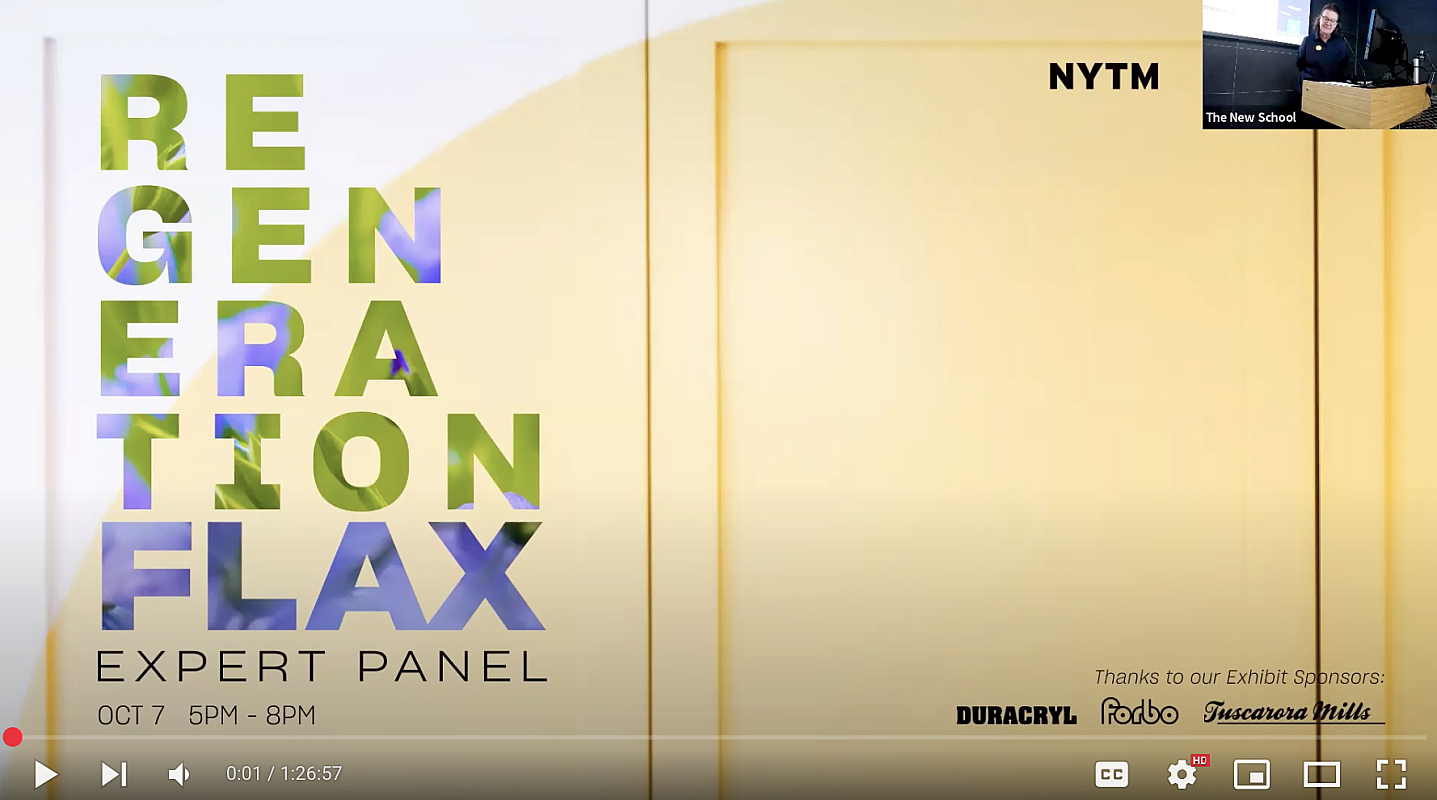A panel of flax experts took the stage for a series of presentations and an engaging discussion about the potential of flax, a miraculous rotation crop that sequesters carbon and has many applications, from linen textiles to oils for paints and flooring, to seed for food.
“The entire flax plant can be used, it is actually zero-waste” - Marie Demaegdt
The panelists were: Heidi Barr: Co-founder and CEO of the PA Flax Project, working to revive linen production in Pennsylvania by connecting farming with textile production; Alvin Ulrich: Founder of Biolin Research Inc., a leading expert in flax processing and research in North America; and Marie Demaegdt: Textile and Sustainability Manager at the Alliance for European Flax-Linen & Hemp, promoting sustainable flax-linen practices across Europe.
The panel launched a series of events alongside the exhibition Regeneration of Flax: Linseed, Linen, Shive & Oil, on view at the Arnold and Sheila Aronson Galleries in New York CIty from September 30-November 12, 2024.
Heidi, Alvin, and Marie presented their work and engaged in a lively discussion with the audience and moderator Jess Thies, researcher at HML and exhibition curator. The panel explored the cultivation and processing of flax, comparing it to hemp and other natural fibers. Key topics included flax’s role in sustainable agriculture, its potential for phytoremediation, crop rotation practices, and the future of flax in the textile and building industries.
“Flax has the potential to remove lead from soil.” - Heidi Barr
Audience members asked about flax’s suitability for different climates, its environmental impact, government incentives for flax farming in the US, and potential synergies between flax and hemp. There was also interest in flax’s historical significance, indigenous uses, and natural methods for wrinkle-resistant properties.
The flax experts also discussed organic farming methods, the challenges of scaling flax production, and the benefits of local material sourcing for regional economies.
Watch the recording here:
